Powehi Means “the Adorned Fathomless Dark Creation” Or “embellished Dark Source Of Unending Creation”

Powehi means “the adorned fathomless dark creation” or “embellished dark source of unending creation” and comes from the Kumulipo, an 18th century Hawaiian creation chant. Po is a profound dark source of unending creation, while wehi, meaning honoured with embellishments, is one of the chant’s descriptions of po, the newspaper reported.
More Posts from Primordialbitch and Others
Gobble Up These Black (Hole) Friday Deals!
Welcome to our 6th annual annual Black Hole Friday! Check out these black hole deals from the past year as you prepare to head out for a shopping spree or hunker down at home to avoid the crowds.
First things first, black holes have one basic rule: They are so incredibly dense that to escape their surface you’d have to travel faster than light. But light speed is the cosmic speed limit … so nothing can escape a black hole’s surface!
Black hole birth announcements
Some black holes form when a very large star dies in a supernova explosion and collapses into a superdense object. This is even more jam-packed than the crowds at your local mall — imagine an object 10 times more massive than the Sun squeezed into a sphere with the diameter of New York City!

Some of these collapsing stars also signal their destruction with a huge burst of gamma rays. Our Fermi Gamma-ray Space Telescope and Neil Gehrels Swift Observatory continuously seek out the signals of these gamma ray bursts — black hole birth announcements that come to us from across the universe.
NICER black holes
There are loads of stellar mass black holes, which are just a few 10s of times the Sun’s mass, in our home galaxy alone — maybe even hundreds of millions of them! Our Neutron Star Interior Composition Explorer, or NICER for short, experiment on the International Space Station has been studying some of those relatively nearby black holes.

Near one black hole called GRS 1915+105, NICER found disk winds — fast streams of gas created by heat or pressure. Scientists are still figuring out some puzzles about these types of wind. Where do they come from, for example? And do they change the way material falls into the black hole? Every new example of these disk winds helps astronomers get closer to answering those questions.
Merging monster black holes
But stellar mass black holes aren’t the only ones out there. At the center of nearly every large galaxy lies a supermassive black hole — one with the mass of millions or billions of Suns smooshed into a region no bigger than our solar system.

There’s still some debate about how these monsters form, but astronomers agree that they certainly can collide and combine when their host galaxies collide and combine. Those black holes will have a lot of gas and dust around them. As that material is pulled into the black hole it will heat up due to friction and other forces, causing it to emit light. A group of scientists wondered what light it would produce and created this mesmerizing visualization showing that most of the light produced around these two black holes is UV or X-ray light. We can’t see those wavelengths with our own eyes, but many telescopes can. Models like this could help scientists know what to look for to spot a merger.
Black holes power bright gamma ray lights
It also turns out that these supermassive black holes are the source of some of the brightest objects in the gamma ray sky! In a type of galaxy called active galactic nuclei (also called “AGN” for short) the central black hole is surrounded by a disk of gas and dust that’s constantly falling into the black hole.

But not only that, some of those AGN have jets of energetic particles that are shooting out from near the black hole at nearly the speed of light! Scientists are studying these jets to try to understand how black holes — which pull everything in with their huge amounts of gravity — provide the energy needed to propel the particles in these jets. If that jet is pointed directly at us, it can appear super-bright in gamma rays and we call it a blazar. These blazars make up more than half of the sources our Fermi space telescope sees.
Catching particles from near a black hole
Sometimes scientists get a two-for-one kind of deal when they’re looking for black holes. Our colleagues at the IceCube Neutrino Observatory actually caught a particle from a blazar 4 billion light-years away. IceCube lies a mile under the ice in Antarctica and uses the ice itself to detect neutrinos, tiny speedy particles that weigh almost nothing and rarely interact with anything. When IceCube caught a super-high-energy neutrino and traced its origin to a specific area of the sky, they turned to the astronomical community to pinpoint the source.

Our Fermi spacecraft scans the entire sky about every three hours and for months it had observed a blazar producing more gamma rays than usual. Flaring is a common characteristic in blazars, so this didn’t attract special attention. But when the alert from IceCube came through, scientists realized the neutrino and the gamma rays came from the same patch of sky! This method of using two or more kinds of signals to learn about one event or object is called multimessenger astronomy, and it’s helping us learn a lot about the universe.

Get more fun facts and information about black holes HERE and follow us on social media today for other cool facts and findings about black holes!
Make sure to follow us on Tumblr for your regular dose of space: http://nasa.tumblr.com.
Hubble fortuitously discovers a new galaxy in the cosmic neighborhood
Astronomers using the NASA/ESA Hubble Space Telescope to study some of the oldest and faintest stars in the globular cluster NGC 6752 have made an unexpected finding. They discovered a dwarf galaxy in our cosmic backyard, only 30 million light-years away. The finding is reported in the journal Monthly Notices of the Royal Astronomical Society: Letters.

An international team of astronomers recently used the NASA/ESA Hubble Space Telescope to study white dwarf stars within the globular cluster NGC 6752. The aim of their observations was to use these stars to measure the age of the globular cluster, but in the process they made an unexpected discovery.
Keep reading
Here’s one good thing to come out of 2020:
Paleontologists completed a life-sized replica of Sue, the most complete T. Rex ever found.

And she is freaking GORGEOUS!
As I read more about this beauty, I found out some new details regarding things I thought I previously knew about the beast that was Tyrannosaurus Rex, and I’m going to share them with you.
First, and most obvious, her size:

This is nothing new, we all figured T. Rex was big, but I for one never stopped to consider exactly how big it was. Nobody ever really knows what to imagine when they read about something the size of a whale that walked around and ate everything it could kill.
Speaking of eating things, I just want to remind you all that T. Rex had–by miles–the strongest bite of any terrestrial animal living or dead, somewhere around six and a half tons of force. That’s over six times greater than the current estimate of what Allosaurus was capable of, and three times what was delivered by the highest measured reading of the living title holder–the estuarine crocodile. It didn’t have to waste time swinging its head open-mouthed like Saurophaganax for a little extra oomph, or grow fancy serrated teeth like Carcharodontosaurus to cut pieces out of its prey. It opted for the simplest approach: get its mouth around something and crush it to death; imagine the full weight of an elephant on whatever was between this thing’s jaws.
“How did it find something to eat?” I hear you asking. “It can’t see something if it doesn’t move, right?”
Listen, I love Jurassic Park too, but that’s a big crock of shit.

Notice how both her eyes face forward. That gives her binocular vision (the ability to focus both eyes on one target, like you and I). More importantly it means she has impeccable depth perception due to overlapping fields of vision from each, large, eyeball. Researchers agree that T. Rex not only had incredible vision, but that it was probably better than most modern animals–including eagles, hawks, and owls–and that she could likely spot something three and a half miles away. If something that big can see that well, it doesn’t matter if you move or not, she’d be able to tell if it was an animal trying to hide or a piece of vegetation. So pray she isn’t hungry if she lays eyes on you. And even if by some miracle she didn’t see you, she’d still smell you.
If she decided you looked tasty, you probably wouldn’t hear her coming as much as you’d feel her. Modern science indicates that T. Rex didn’t roar like in Jurassic Park, but rather bellowed or maybe even hissed like crocodilians. If she were on to you, you’d most likely feel this sense of unease creep up your spine as a low-pitched rumble in the air permeated through you. You wouldn’t know what it was or where it was coming from until you hear her footfalls. By then it’s too late–you could try to run but she’d probably catch you. There’s plenty on YouTube that reconstructs what T. Rex may have sounded like, and it’s legitimately haunting.
To wrap all of this up, the one bit of good that came out of the cursed year that is 2020 is that this wonderful child of science and art came into the world, and reaffirmed my respect and admiration for the eight ton slab of muscle and teeth that is this magnificent creature.

…and it is nothing if not magnificent.
This astrophysicist is unlocking the secrets of dark matter
by Daryle Lockhart
Nico Cappelluti is an assistant professor in the Physics Department and an astrophysicist at the University of Miami. As such, he studies the sky. He is most intrigued by the cosmic phenomena of supermassive black holes, the nature of dark matter, and the very bright light source found at the center of many galaxies - active galactic nuclei.

Recently, Cappelluti published findings in The Astrophysical Journal entitled, “Searching for the 3.5 keV line in the deep fields with Chandra: the 10 MS observations”. His findings could give insight into a subject astrophysicists have been investigating for decades: What is dark matter and where does it come from?
Keep reading
Tabby's Star, not an Alien megastructure is the cause of dimming of the 'most mysterious star in the universe'

A team of more than 200 researchers, including Penn State Department of Astronomy and Astrophysics Assistant Professor Jason Wright and led by Louisiana State University’s Tabetha Boyajian, is one step closer to solving the mystery behind the “most mysterious star in the universe.” KIC 8462852, or “Tabby’s Star,” nicknamed after Boyajian, is otherwise an ordinary star, about 50 percent bigger and 1,000 degrees hotter than the Sun, and about than 1,000 light years away. However, it has been inexplicably dimming and brightening sporadically like no other. Several theories abound to explain the star’s unusual light patterns, including that an alien megastructure is orbiting the star.
Keep reading
Pls tell me interesting facts about stars
Interesting facts about stars:
Heavy stars blow up and make heavier elements like gold. So, every bit of gold you’ve ever seen, worn, or touched came from the dying explosion of a star. Other elements made in supernovae include anything on the periodic table heavier than iron
Heavy stars blow up when they start fusing iron. Meaning, the iron in your frying pan, car, and your blood killed a star at least 3 times the mass of the sun.
Some massive stars that die end up compressing all their mass into a star about 6 miles across, or about the size of a city. This is called a neutron star.
To put this in perspective, these stars start out 3 times as big as our sun and all of their mass is crushed into something the size of a city. The space between atoms is squished away, and the protons and electrons combine to form neutrons.
Neutron stars are literally as dense as atomic nuclei
Most stars come in pairs
The most common stellar type is a red dwarf, which is a small, red, dim, cool star.
Honestly, that’s just the first few that come to mind, space is really crazy.
Black holes ruled out as universe's missing dark matter
For one brief shining moment after the 2015 detection of gravitational waves from colliding black holes, astronomers held out hope that the universe’s mysterious dark matter might consist of a plenitude of black holes sprinkled throughout the universe.
University of California, Berkeley, physicists have dashed those hopes.

Based on a statistical analysis of 740 of the brightest supernovas discovered as of 2014, and the fact that none of them appear to be magnified or brightened by hidden black hole “gravitational lenses,” the researchers concluded that primordial black holes can make up no more than about 40 percent of the dark matter in the universe. Primordial black holes could only have been created within the first milliseconds of the Big Bang as regions of the universe with a concentrated mass tens or hundreds of times that of the sun collapsed into objects a hundred kilometers across.
The results suggest that none of the universe’s dark matter consists of heavy black holes, or any similar object, including massive compact halo objects, so-called MACHOs.
Keep reading
Washington State University Physicists create 'negative mass'
Washington State University physicists have created a fluid with negative mass, which is exactly what it sounds like. Push it, and unlike every physical object in the world we know, it doesn’t accelerate in the direction it was pushed. It accelerates backwards.

The phenomenon is rarely created in laboratory conditions and can be used to explore some of the more challenging concepts of the cosmos, said Michael Forbes, a WSU assistant professor of physics and astronomy and an affiliate assistant professor at the University of Washington. The research appears today in the journal Physical Review Letters, where it is featured as an “Editor’s Suggestion.”
Hypothetically, matter can have negative mass in the same sense that an electric charge can be either negative or positive. People rarely think in these terms, and our everyday world sees only the positive aspects of Isaac Newton’s Second Law of Motion, in which a force is equal to the mass of an object times its acceleration, or F=ma. In other words, if you push an object, it will accelerate in the direction you’re pushing it. Mass will accelerate in the direction of the force.
Keep reading
Newly discovered Amazon rock art show the rainforest's earliest inhabitants living with giant Ice Age animals

Amazonian rock art newly discovered by researchers provides further proof the rainforest’s earliest inhabitants lived alongside now-extinct giant Ice Age animals.
The thousands of pictures are among the oldest depictions of people interacting with the huge creatures, including mastodons. Usually the only clues about their appearance are skeletal remains.
This is one of the largest collections of rock art found in South America. The recorded drawings, likely first made around 12,600 and 11,800 years ago, are on three rock shelters on hills in the Colombian Amazon. The paintings, identified during landscape surveys, also depict geometric shapes, human figures, and handprints, as well as hunting scenes and people interacting with plants, trees and savannah animals. The vibrant red pictures were produced over a period of hundreds, or possibly thousands, of years. Read more.
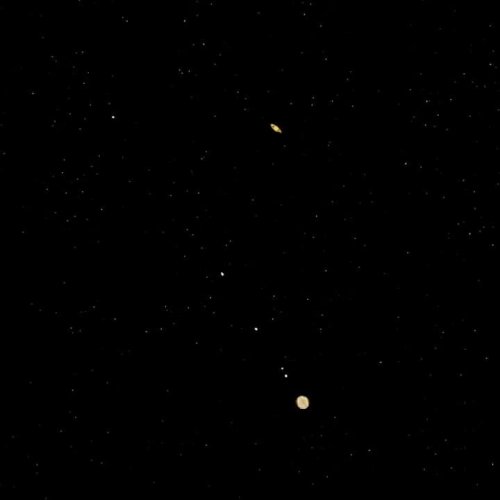
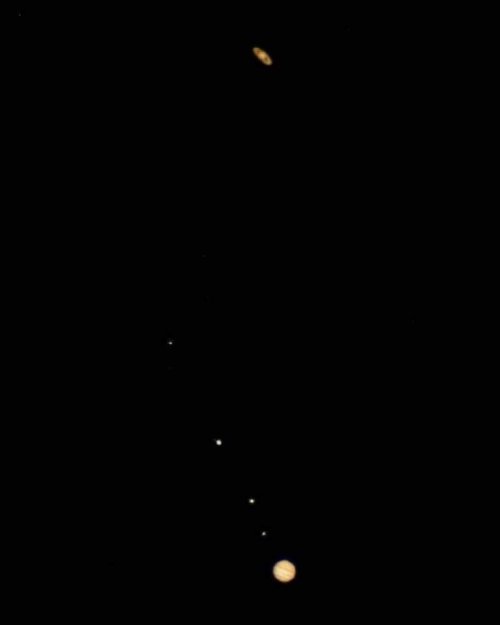
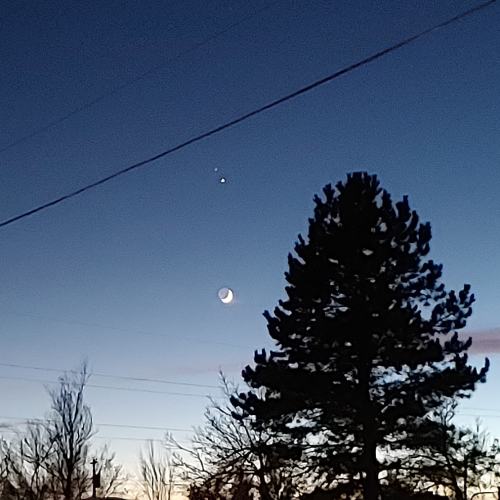
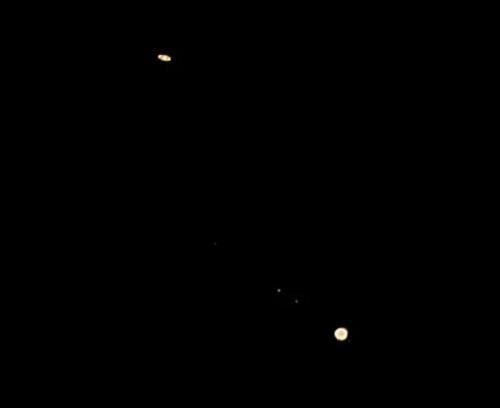
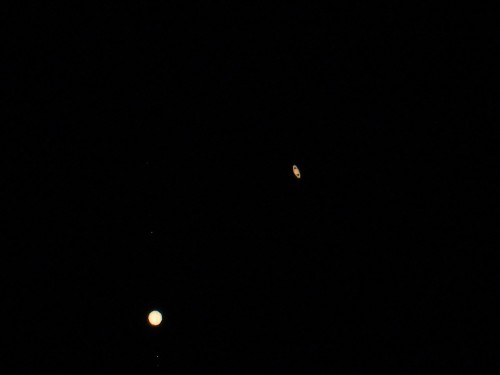
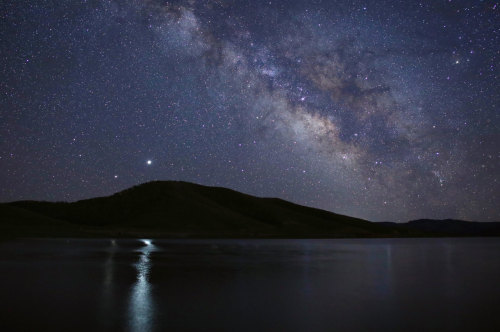
The Great Conjunction: Jupiter and Saturn 🌌.
-
 aseariel liked this · 2 years ago
aseariel liked this · 2 years ago -
 tinyearthquakepatrol liked this · 2 years ago
tinyearthquakepatrol liked this · 2 years ago -
 shmoo92 reblogged this · 2 years ago
shmoo92 reblogged this · 2 years ago -
 pseudoply reblogged this · 2 years ago
pseudoply reblogged this · 2 years ago -
 raspberryply liked this · 2 years ago
raspberryply liked this · 2 years ago -
 omegaxenonaut liked this · 3 years ago
omegaxenonaut liked this · 3 years ago -
 ruinconstellation liked this · 3 years ago
ruinconstellation liked this · 3 years ago -
 igottashowthistosomebody reblogged this · 3 years ago
igottashowthistosomebody reblogged this · 3 years ago -
 kalliphorne reblogged this · 3 years ago
kalliphorne reblogged this · 3 years ago -
 elysuional reblogged this · 4 years ago
elysuional reblogged this · 4 years ago -
 prismatic-et-al reblogged this · 4 years ago
prismatic-et-al reblogged this · 4 years ago -
 mischief02 liked this · 4 years ago
mischief02 liked this · 4 years ago -
 positivityontopoftheworld liked this · 4 years ago
positivityontopoftheworld liked this · 4 years ago -
 maretadavidson liked this · 4 years ago
maretadavidson liked this · 4 years ago -
 ishouldnotbhere reblogged this · 4 years ago
ishouldnotbhere reblogged this · 4 years ago -
 pleasantroadpersonsalad liked this · 4 years ago
pleasantroadpersonsalad liked this · 4 years ago -
 primordialbitch reblogged this · 4 years ago
primordialbitch reblogged this · 4 years ago -
 adiposeclot liked this · 4 years ago
adiposeclot liked this · 4 years ago -
 penguinsstealingsanity liked this · 5 years ago
penguinsstealingsanity liked this · 5 years ago -
 jasjabberwocky reblogged this · 5 years ago
jasjabberwocky reblogged this · 5 years ago -
 dameronalone liked this · 5 years ago
dameronalone liked this · 5 years ago -
 itching-feet-faded-smiles reblogged this · 5 years ago
itching-feet-faded-smiles reblogged this · 5 years ago -
 mariahs liked this · 5 years ago
mariahs liked this · 5 years ago -
 elleesttrois liked this · 5 years ago
elleesttrois liked this · 5 years ago -
 reignofmemory reblogged this · 5 years ago
reignofmemory reblogged this · 5 years ago -
 amaurylandia reblogged this · 5 years ago
amaurylandia reblogged this · 5 years ago -
 amaurylandia liked this · 5 years ago
amaurylandia liked this · 5 years ago -
 alcooliques-anonymes liked this · 5 years ago
alcooliques-anonymes liked this · 5 years ago -
 mizugoma liked this · 5 years ago
mizugoma liked this · 5 years ago -
 figurativelyliteraly liked this · 5 years ago
figurativelyliteraly liked this · 5 years ago -
 gks1901 liked this · 5 years ago
gks1901 liked this · 5 years ago -
 kikioooooo liked this · 5 years ago
kikioooooo liked this · 5 years ago -
 lion-blood liked this · 5 years ago
lion-blood liked this · 5 years ago -
 oftwodarkmoons reblogged this · 5 years ago
oftwodarkmoons reblogged this · 5 years ago -
 demonwrestler liked this · 5 years ago
demonwrestler liked this · 5 years ago -
 haveyouseenmycriticalthinking reblogged this · 5 years ago
haveyouseenmycriticalthinking reblogged this · 5 years ago
